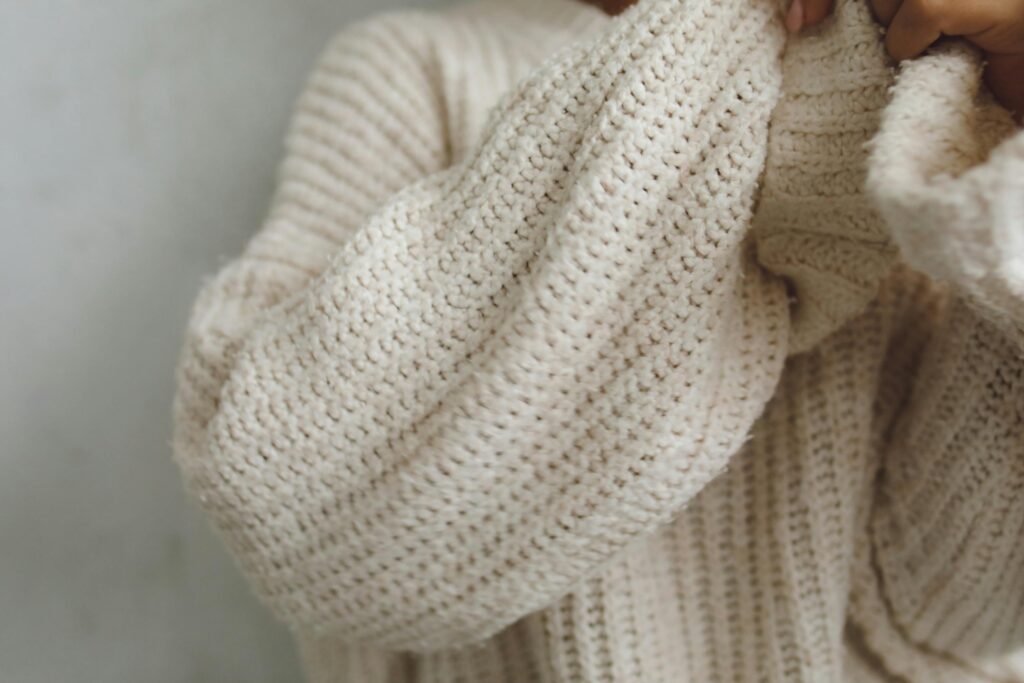There’s something magical about handmade clothing.
Every stitch carries intention. Every design reflects hours of creativity, patience, and love.
When you sell handmade clothing, you’re not just offering garments, you’re offering a story, a soul, a piece of yourself.
But here’s the hard truth: No matter how beautiful your work is, it might never leave your studio if it doesn’t reach the right people.
Selling handmade clothing online isn’t just about listing products and hoping for the best.
It’s about creating a brand, telling a story, and building real connections with people looking for exactly what you make.
This guide will walk you through how to do exactly that. Not with quick hacks or empty promises, but with real, actionable steps to build something lasting and meaningful.
Guide to Selling Handmade Clothing Online
1. Start by Truly Knowing Who You’re Creating For
If you’re serious about selling your clothing, you need to understand something crucial: you are not making clothes for everyone.
You’re making them for someone. Someone specific. Someone who will see your designs and feel like they were made just for them.
Think about it:

Who is this person? What do they care about? What do they dream about? And what problems do they have that your clothing can help solve?
Maybe it’s a woman who craves individuality in a world of fast fashion. Or it’s a man who values craftsmanship and wants clothes that last.
Maybe it’s someone who believes deeply in ethical production and sustainability.
Create a detailed profile of this person.
Give them a name. Picture their life. Understand what they love, what they fear, and what they scroll through at night on their phone.
Because once you know them, you’ll know how to speak to them — in your designs, your marketing, and your brand voice.
2. Build a Brand
Selling handmade clothing isn’t just about products, it’s about identity.
Your brand is the bridge between your clothes and the hearts of your customers. It’s what tells them.
Here’s how you build that:
Tell your story:
Why do you make clothes? What drives you to keep sewing, designing, and creating?
Real stories build real trust.
Choose your visual language:
What colors, fonts, and photos capture your spirit?
If you sell vintage-inspired dresses, your visuals might be soft, nostalgic, and dreamy. If you sell edgy, streetwear-style pieces, your brand might feel bold, fast, and electric.
Create consistency everywhere:
Every post, every product description, every email it should all feel like it’s coming from the same heartbeat.
Real Connection Tip: People don’t just buy handmade clothes because they like how they look.
They buy because of how those clothes make them feel.
Make sure your branding evokes that feeling every step of the way.
3. Set Up an Online Space
Your Online Store Is Your Digital Storefront, and First Impressions Matter
Imagine walking into a physical boutique. If the space is cluttered, poorly organized, or confusing, you’re likely to walk right back out.
The same principle applies online. Visitors decide within seconds whether to stay or leave, and a chaotic, unclear, or unprofessional storefront will drive them away before you can even say “hand-stitched.”
Choose the Right Platform for Your Brand’s Needs
The platform you choose will shape the customer experience and impact how easily you can scale. Here’s how to make the right decision:
01). Starting Small? Consider Etsy:
Etsy is a trusted global marketplace where customers actively seek handmade, vintage, and artisanal goods.
If you’re just starting and want to tap into an existing audience with lower upfront costs, Etsy offers a supportive entry point — but keep in mind you’ll be operating within their ecosystem and rules.
02). Want Full Creative Control? Choose Shopify:
If you’re serious about building an independent brand, Shopify offers unparalleled flexibility.
You control everything, from website design and checkout flow to integrations like email marketing and inventory management.
It’s perfect if you want to craft a fully customized experience and grow your brand identity outside of third-party marketplaces.
03). Prefer Low-Maintenance and Stunning Design? Try Squarespace or Wix:
If ease of use and visual appeal are your top priorities, Squarespace and Wix deliver beautiful, professional-looking templates without the need for coding.
They’re excellent choices for entrepreneurs who want a stylish store up and running quickly, with minimal technical overhead.
No Matter What You Choose, Focus on This:
Regardless of platform, your store should feel welcoming, polished, and authentic to your brand’s voice.
Invest in clean, cohesive design, professional photos, and clear navigation.
A thoughtfully crafted digital storefront invites visitors to linger, explore, and, most importantly, become loyal customers.
4. Show Your Clothes In Their Best Light — Literally
When customers can’t touch, try on, or feel your clothes, photos do all the heavy lifting.
Bad photos = lost sales.
Great photos = love at first sight.
Invest time (or money) in beautiful photography.
Here’s what you need:
Use natural light whenever you can; it keeps things looking clean and real.
Shoot from multiple angles: front, side, back, and get close-ups too.
Show your clothes in action with styled shots of real people wearing them out in the world.
Don’t forget detail shots that show off the stitching, textures, and those little design touches that make your pieces special.
And keep your editing style consistent so everything feels like it belongs together.
Pro Tip: Show your clothing in action.
Capture movement. A dress swaying in the wind. A jacket thrown over a shoulder.
Bring your creations to life.
5. Price Like a Professional
Many handmade clothing makers fall into the trap of underpricing out of fear.
But here’s something important:
Pricing isn’t just about numbers, it’s about value.
When you charge too little, it doesn’t just hurt you financially, it makes customers doubt the quality of your work.
Here’s a simple formula:
(Material Costs + Labor + Overhead) x 2 to 3 = Retail Price
(Yes, at least 2 to 3 times your costs, because you’re running a business, not a hobby.)
And always remember:
You are not just selling fabric. You are selling craftsmanship, vision, skill, and care.
Price accordingly.
6. Attract, Don’t Chase: How to Market Your Handmade Clothing
If marketing feels intimidating, you’re not alone.
Many creatives and entrepreneurs feel the same way at first.
But here’s a mindset shift that can make all the difference: marketing is simply storytelling.
It’s about welcoming your ideal customer into your world, building a relationship, and inviting them to be part of something meaningful.
Here’s how you can approach it naturally and effectively:
01. Social Media
People don’t just buy products, they buy into stories, values, and experiences.
Use platforms like Instagram, Pinterest, and TikTok (whichever your audience prefers) to:
Share behind-the-scenes moments: What inspires you? What challenges are you overcoming?
Show your creative process: Let people see how your pieces are made, from sketch to final stitch.
Tell the story behind your designs: What does each collection or item represent? What emotions or ideas inspired it?
Tip: Focus more on storytelling and value-sharing than selling. Sales naturally follow connection.
02. Email Marketing
An email list is one of your most valuable assets. Unlike social media platforms, you own your list, and it allows you to build direct, personal relationships with your customers.
From day one, encourage people to subscribe by offering:
Style tips and advice
Sneak peeks of new collections
Personal stories and notes from behind the scenes
Occasional exclusive offers (without overwhelming them with “buy now!” messages)
Consistency beats perfection; even a simple monthly email keeps the relationship warm.
3. Content Creation
Starting a blog, vlog, or even a simple content series can position you as an expert and deepen trust with your audience.
Some ideas:
Style guides: How to mix and match your pieces
Sustainability tips: Teach your customers how your brand supports eco-conscious fashion
Care guides: How to properly care for handmade or sustainable clothing
Content allows you to extend your story and values beyond a single product, and helps potential customers see themselves in your brand.
4. Influencer Collaborations: Choose Authentic Partners
You don’t need massive influencers to make an impact.
Smaller influencers (sometimes called “micro-influencers”) often have more engaged and loyal audiences.
Look for people who:
Genuinely align with your brand aesthetic and values
Would naturally wear and talk about your products even without payment
Share your target customer base
Authenticity always outperforms sheer follower count when it comes to building lasting trust.
5. Paid Ads (When You’re Ready): Amplify, Don’t Replace
Once you have some organic traction, you can consider paid advertising to reach more of the right people.
Start small with Facebook or Instagram ads, carefully targeting by interests, behaviors, and demographics that match your ideal customer.
Use ads to:
- Promote specific product launches
- Invite people to join your email list
- Share stories and content, not just sales pitches
- Paid ads work best when they amplify an already-strong brand story.
- The Biggest Marketing Secret:
- Focus on community, not just conversion.
The most successful brands don’t just sell products, they build tribes. They create spaces where people feel seen, heard, and connected.
When you center your marketing around building real relationships, not just pushing sales, your brand grows organically, sustainably, and joyfully.
7. Deliver an Experience They’ll Never Forget
Selling handmade clothing isn’t a one-time transaction.
It’s a relationship.
From the moment someone lands on your page to the moment they unwrap their order, you want them to feel special.
Make checkout easy. Ship quickly and beautifully. Include a handwritten thank-you note. Follow up to ask if they loved their purchase.
Happy customers become loyal fans.
Loyal fans tell their friends.
And that’s how your business grows organically.
8. Grow With Grace
As you start making more sales, you’ll face new challenges:
Should you hire help? Offer custom orders? Should you expand your product line?
Grow at your own pace.
Protect your creativity.
Stay close to your customers.
Keep evolving, but never lose the magic that makes your work yours.
Conclusion
There’s never been a better time to sell handmade clothing online.
People are craving authenticity. They want to wear things that tell a story, that feel real, that align with their values.
You are exactly what they’re looking for.
By building a strong brand, connecting deeply with your ideal customers, and delivering a beautiful experience, you’re not just running a business.
You’re creating a movement around craftsmanship, care, and creativity.
And the world needs more of that.
You’ve got this. Now go share your magic.

